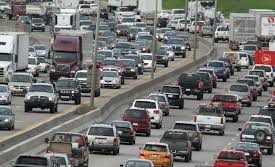Wendell Cox
Recently the city of Calgary released its municipal census report, which included data on how people commute to work. One newspaper headlined “Calgarians continue love affair with cars,” noting that driving alone far outpaced the number of people using transit to get to work. More than two-thirds of commuters drove alone, and car pools increased the automobile share to nearly three quarters.
Calgary is typical in its automobile use. Most commuters continue to drive alone in all of the other five metropolitan areas with more than 1 million residents. According to Statistics Canada, 60% or more of commuters drove alone in Toronto, Montréal, Vancouver, Edmonton and Ottawa-Gatineau in 2011.
The continuing dominance of solo driving may be surprising considering the expensive efforts to discourage automobile use and to re-engineer cities. Billions have been spent to build urban rail systems in hopes of attracting drivers from their cars and highway construction is discouraged. Planners, embracing “urban containment policies,” have prohibited new houses on the urban fringe (where the city meets rural areas), in part hoping that this will discourage driving. Yet, urban containment policies increase population densities, which in turn increases traffic congestion. This translates into wasted time and fuel, at the same time that urban fringe land use prohibitions drive house prices out of reach of middle-income households.
Hong Kong is the ideal urban containment city, with the highest urban population density in the high-income world and perhaps the largest share of travel on transit, at above 80 percent. This density — nearly 10 times Toronto — has a price. House sizes are less than one-third the size of Canada, despite larger households. Houses cost much more than in Vancouver or Toronto. Commuting time is among the longest, at 47 minutes. Getting to work takes nearly 50% more time than in Toronto or Vancouver and two-thirds longer than in Los Angeles, with its reputation for “sprawl.”
Canadians have shorter commute times than in most other nations. An important key is the car, which is far faster than mass transit. Statistics Canada shows that transit commuters spend, on average, 60% longer getting to work than those driving alone. Another important key is that employment is dispersed — only 13% of metropolitan jobs are in the Central Business Districts (CBDs), ranging from less than 10% in Vancouver to nearly 20% percent in Ottawa-Gatineau. With 80% to 90% of employment outside the CBD, employment densities are much lower, allowing the flexibility, convenience and speed of the car to minimize travel time.
Yes, transit plays an important role. Transportation Association of Canada data indicates that at least 60 percent of morning travel to the highest density CBDs is by transit in Toronto, Montréal and Vancouver. Of course, the overwhelming majority of commuting to areas outside the CBDs is by car.
Alain Bertaud, a former World Bank principal planner, stresses that large cities exist because they are large labour markets, and that their success requires residents to have access to more jobs. This means faster travel times, which are only possible by car for nearly all destinations. Academic research shows that metropolitan areas generally have better job creation and economic growth if residents can access more jobs in a fixed time, such as 30 minutes.
There is an ongoing debate among economists about the future of economic growth. Surely in a more competitive world, there is a need to ensure that scarce public resources are used efficiently and that no more is taken from taxpayers than necessary. This is as true in urban transportation as in other domains of policy. Moreover, the continuing concerns about the declining middle class have a far better chance of being solved in an economy that grows faster. Importantly, the job creation associated with economic growth improves opportunities for lower income residents.
Public policies should focus on ultimate outcomes, like the quality of life and reduction of poverty. This requires strong job creation and quick access to those jobs from throughout the metropolitan area. Transit can do this for the largest CBDs, but elsewhere, the car provides the essential access that supports the quality of life. Put in the language of the headline above, Canadians have “a love affair with affluence.”
Wendell Cox is a Senior Fellow at the Frontier Centre for Public Policy (www.fcpp.org).



